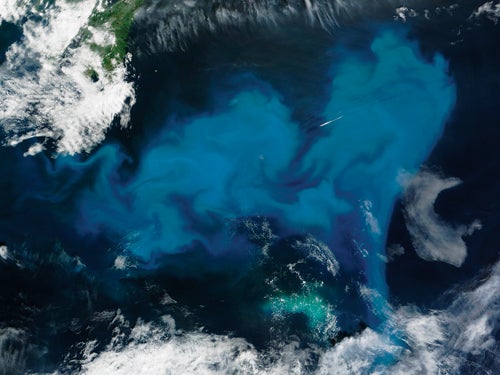In Spring, the Ocean Blooms

The North Atlantic has its own greening each year, when a massive bloom of microscopic plants—phytoplankton—unfolds from Bermuda to the Arctic. It’s what makes the ocean able to soak up CO2 from the atmosphere:
• Sunlight and carbon dioxide allow phytoplankton to grow and reproduce at the ocean’s surface in a massive display of color known as the North Atlantic Bloom.
• Phytoplankton remove carbon dioxide from seawater during photosynthesis and release oxygen as a by-product. That allows the oceans to absorb additional carbon dioxide from the air.
• Phytoplankton die, and the heavy carbon in their cells sinks to the deep ocean.
• Assistant Professor Melissa Omand and her team have answered an old question: What happens to the lighter particles left over? It turns out that ocean eddies allow them to hitch a ride downward.
• The research has implications for predicting how the oceans will affect atmospheric CO2 and, ultimately, the earth’s climate.
 Home
Home Browse
Browse Close
Close Events
Events Maps
Maps Email
Email Brightspace
Brightspace eCampus
eCampus


